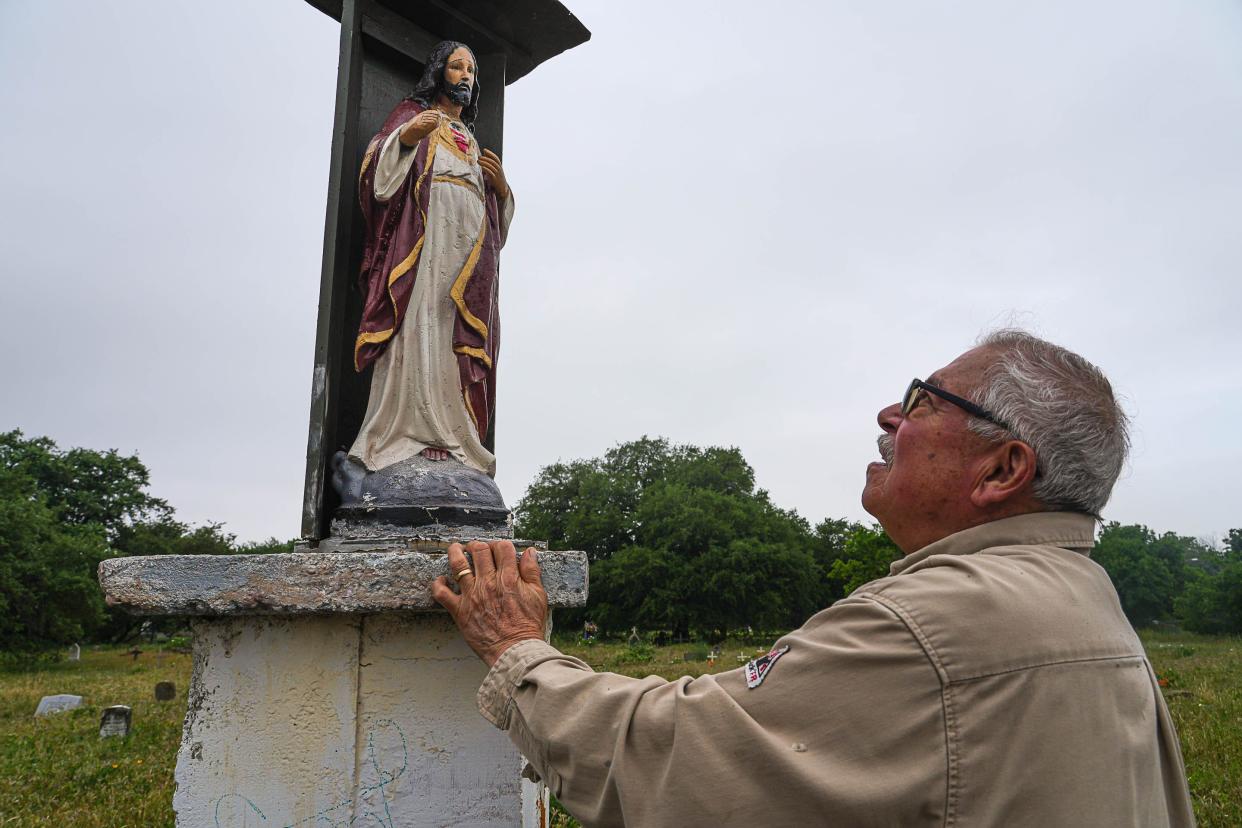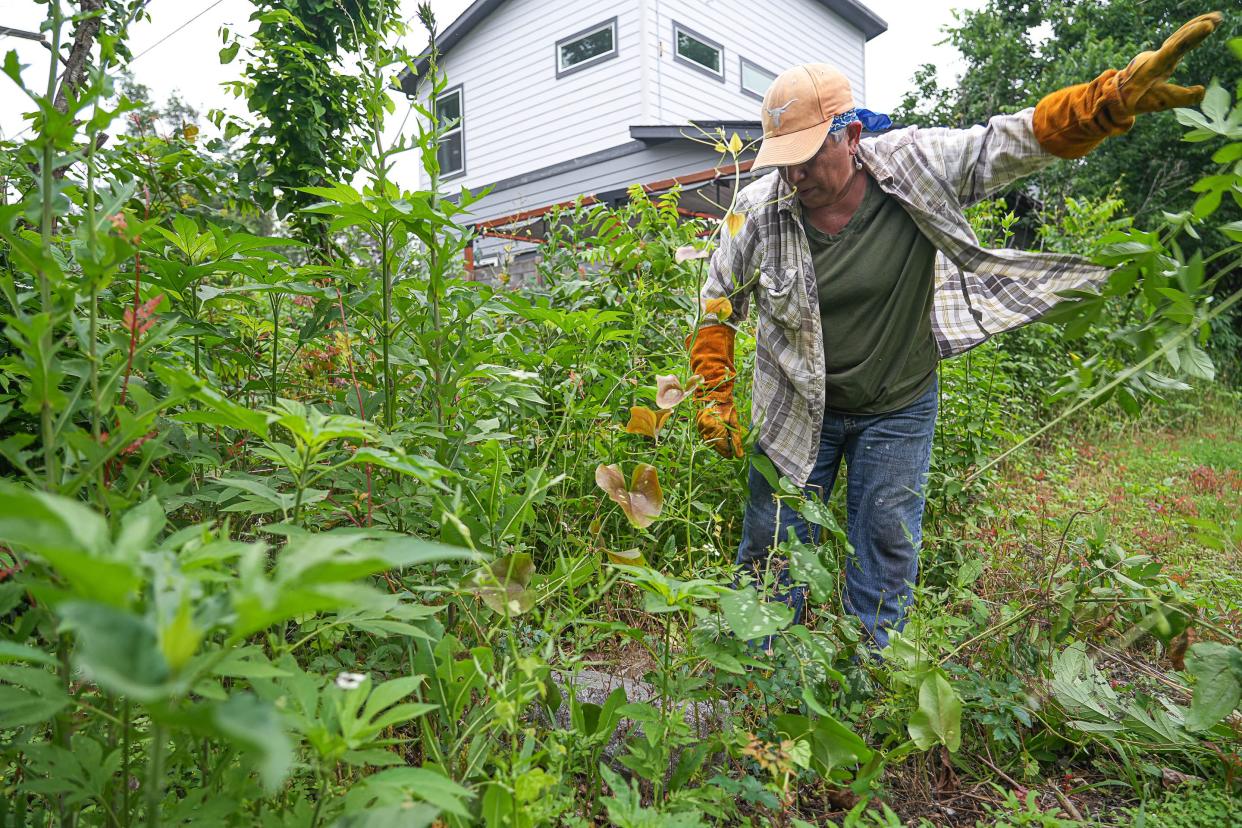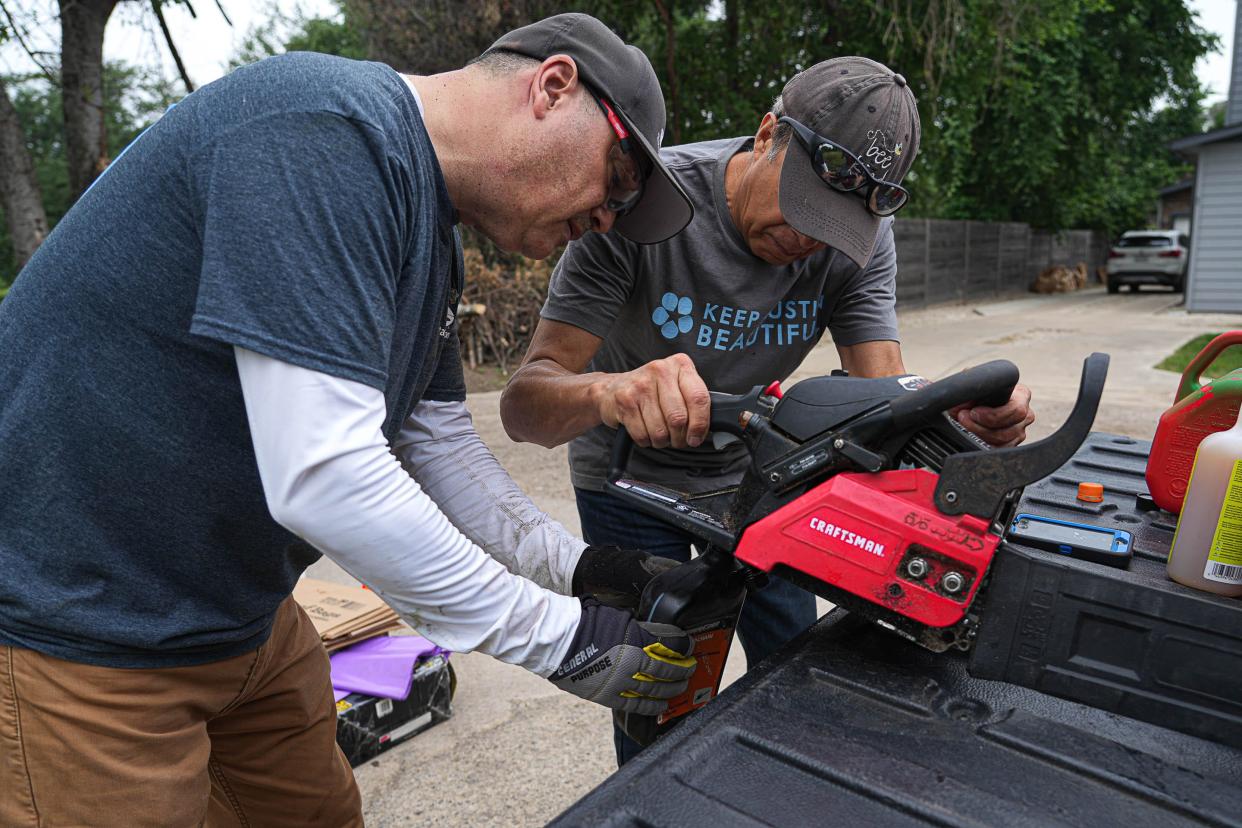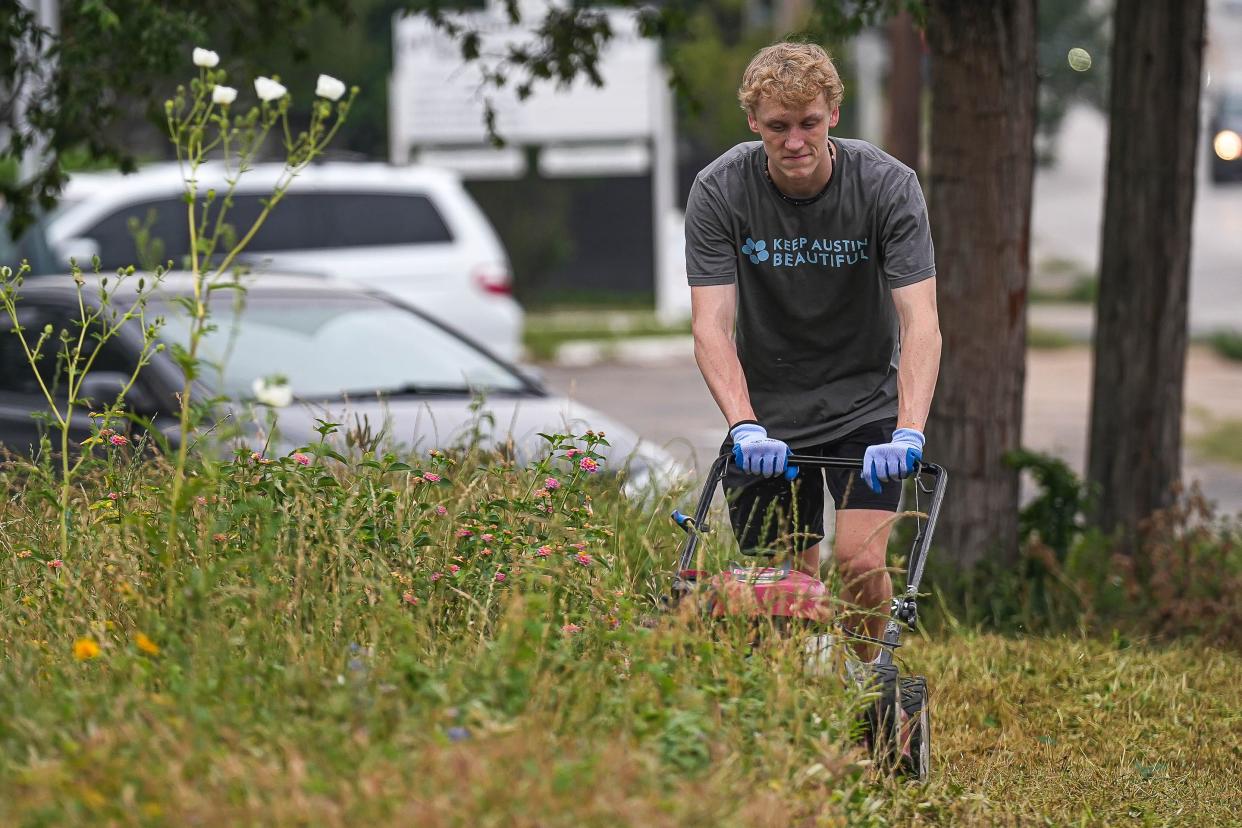In Montopolis, a constant battle to preserve Austin's historic Mexican cemeteries
For more than two decades, Juan Rodriguez, 80, has regularly stopped at Montopolis’ San Jose I Cemetery by himself.
He's replaced the lettering at the historic Mexican cemetery’s gate and trimmed his grandparents' and siblings' gravesites. Most recently, in October, he repaired the gateway's wooden Jesus figure after it tumbled off and split into pieces. He glued the chest and the arms together, repainting them. He carved Jesus a new hand that resembled a dog’s paw and mounted the remade effigy tightly onto the gate pole.
For decades, the sporadic and individual efforts of residents like Rodriguez, many of whom have relatives at the site, kept the unowned and unmanaged cemetery intact. But the earth’s swallow never appeared far away. Sandbur, bull nettle and poison ivy grew plentifully over sprawling ant colonies. Mustang vine leaped from tree to tree, cracking branches over tombstones. Trash mounted. Large tracts were inaccessible and the cemetery’s parameters caved in.
On Saturday morning, under the drizzle of the coming storm, Rodriguez found himself with others. More than two dozen community members — relatives of the deceased, neighbors, Keep Austin Beautiful volunteers brought together by the fledgling San Jose-Montopolis Cemetery Association — hacked at vines, sawed at tree limbs and pushed lawn mowers.

From the cemetery's front side, where he started his weedwhacker, Rodriguez examined the hustle. He liked what he saw.
"With this rain everything grows fast. It's hard to keep up," he said in mixture of Spanish and English. "We need all the help we can get."
Saturday's showing strengthened his hope that future efforts will improve upon the work he's done. The cemetery association has played a large role in centralizing maintenance and historical archive records. But it faces tough questions ahead. The two San Jose cemeteries are still ownerless. Only one is protected by historical status. And, while today San Jose I is traversable, the foliage at the nearby San Jose II still limits public access — and even knowledge of how many graves are there.
How did the San Jose cemeteries come to be?
The cemetery was started by local Mexican and Mexican American community leaders in the late 1910s, said cemetery association chairman Joaquin Rodriguez (no relation to Juan Rodriguez). They intended for the city's Mexican residents, who were excluded from many burial sites, to have a site to inter their dead.

“Back then, not only were we segregated in life, we were segregated in death,” said Rosa Moncada, a SJMCA board member who has about a dozen relatives buried at San Jose.
Over the next four decades the plot filled up. Burials were free. Many families made their own grave markers. They etched dates in distinctive handwritings, used decorative glass work and fixed homemade crosses. Others planted mesquites or other trees as identifiers, Joaquin Rodriguez said.
The exact number of tombs at the original San Jose Cemetery is unknown, but a tally of tomb markers by the Austin Genealogical Society counted several hundred. Moncada said she believes many others are buried in unmarked graves.

By 1947, burials began at San Jose II after the first cemetery had filled. San Jose II is located on Posten Lane, just off the intersection of state highways 71 and 183.
According to Moncada, the two cemeteries lacked attention starting in the 1970s because the Del Valle Burial Association, its caretaker, dissolved. A 1978 article from the local publication La Fuerza describes an overgrowth of brush, trees and litter at San Jose I. That's how Moncada remembers seeing it for decades. Community requests to have the city or county operate the site went nowhere. For the most part, families tended to their relatives' plots.
What lies ahead?
A new generation of cemetery keepers hopes organized efforts can ensure the cemetery is tended to for many years to come.

Moncada and Joaquin Rodriguez formed the San Jose-Montopolis Cemetery Association two years ago after a University of Texas graduate student who was concerned about developers claiming San Jose II brought them together. The association has launched a social media presence, organized frequent community clean-ups and compiled records and histories from the past century.
Moving forward, the association will look to make San Jose II Cemetery more accessible and assure it historical status through the state, he said.
Though some, like Juan Rodriguez, still hold hope that the city will eventually manage the property, the sites' future remains in the community's hands.
Joaquin Rodriguez hopes that the stories of San Jose's dead, rather than the natural overgrowth of years past, will protect graves from vandalism.
Walking around, he pointed at star-shaped fences that marked the gravesites of families who died together in tragedies. He hopes that the association will eventually produce an interactive map of the gravesites to allow people to find loved ones or learn about the neighborhood's past residents.
“When you personalize people, that humanizes them,” Joaquin Rodriguez said. “You think, ‘That could be me. That could've been my family.’”
This article originally appeared on Austin American-Statesman: Austin residents work to preserve city's historic Mexican cemeteries
